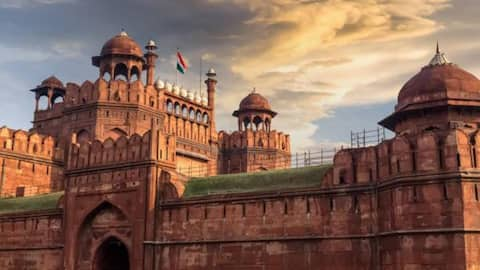Historic sites that shaped India's independence
What's the story
As India gears up to celebrate 79 years of independence on August 15, the spirit of patriotism is palpable across the nation. From tricolor decorations brightening shopping malls to Indian flags proudly displayed at shop counters, the entire country is embracing the festive spirit. While Delhi holds a special place in these celebrations due to its historical and cultural significance, other states also observe this day with great enthusiasm.
Historical significance
Jhansi Fort, Uttar Pradesh
Perched atop a massive hill called Bangira, Jhansi Fort is a majestic fortress that was once the stronghold of the Chandela Kings from the 11th to 17th centuries. Built by Bundela Rajput chief Veer Singh Deo Bundela in 1613, this fort has witnessed many historical events. It was under British rule until a revolt broke out in 1857 and Queen Lakshmibai took control against the British East India Company.
National symbol
Red Fort, Delhi
Red Fort in Delhi is a major landmark of India's freedom struggle. It served as one of the centers for mutineers during the Revolt of 1857 and continues to be an important symbol of Indian history. Every year on August 15, the Prime Minister hoists the national flag and addresses the nation from this historic fort, making it an integral part of Independence Day celebrations.
Memorial site
Cellular Jail, Andaman and Nicobar Islands
Formerly known as Kala Pani, Cellular Jail in Andaman and Nicobar Islands is a poignant reminder of the sacrifices made by our freedom fighters. Notable Indian revolutionaries like Veer Savarkar and Batukeshwar Dutt were imprisoned here. Today, this jail complex serves as a national memorial monument with several mannequins on display showcasing how prisoners were tortured here. The light and sound show at this site is also worth witnessing.
Memorial garden
Jallianwala Bagh, Amritsar
Jallianwala Bagh in Amritsar is a public garden that also houses a national memorial. Established in 1951 by the Government of India, it commemorates the massacre committed by British forces on April 13, 1919. The site still bears the scars of history with several bullet marks visible here. Visiting this place is an opportunity to remember those struggles and sacrifices made during India's fight for freedom.
Historical residence
Swaraj Bhawan, Allahabad
Swaraj Bhawan is a large mansion in Allahabad city of Uttar Pradesh. It was once the residence of the Nehru family and later became the headquarters of the Indian National Congress in the 1920s. This place witnessed many important decisions aimed at ending British rule in India. Today, it stands as one of Allahabad's major attractions and a reminder of India's freedom struggle.
Revolutionary site
August Kranti Maidan, Mumbai
Formerly known as Gowalia Tank Maidan, August Kranti Maidan in Mumbai is another significant landmark of India's freedom struggle. This is where Mahatma Gandhi launched the "Quit India Movement" against British rule in India. His famous slogan "Do or Die" echoed from this ground, leading to the arrest of over 60,000 people. It remains a popular destination for those wanting to pay homage to India's fight for independence.
